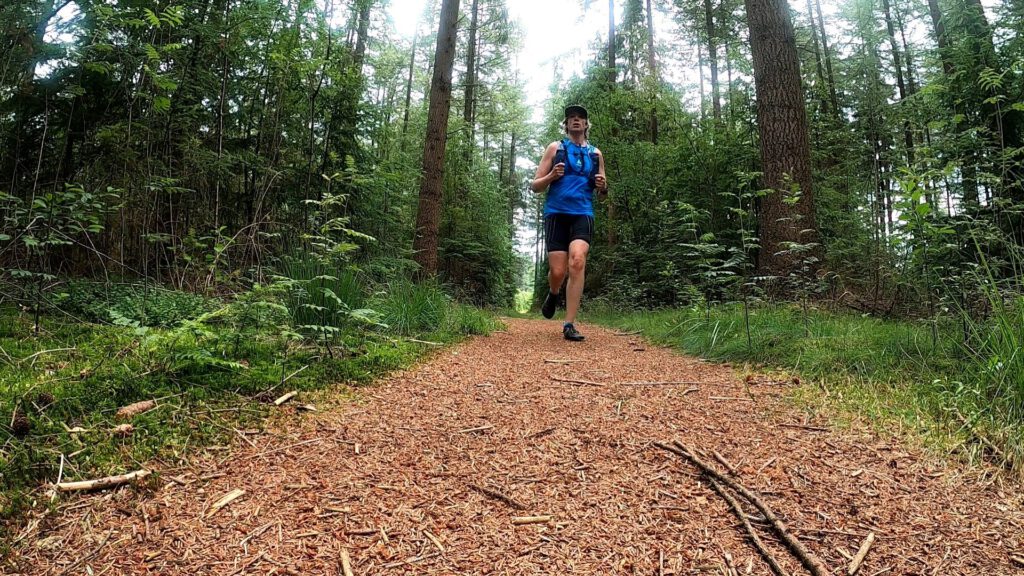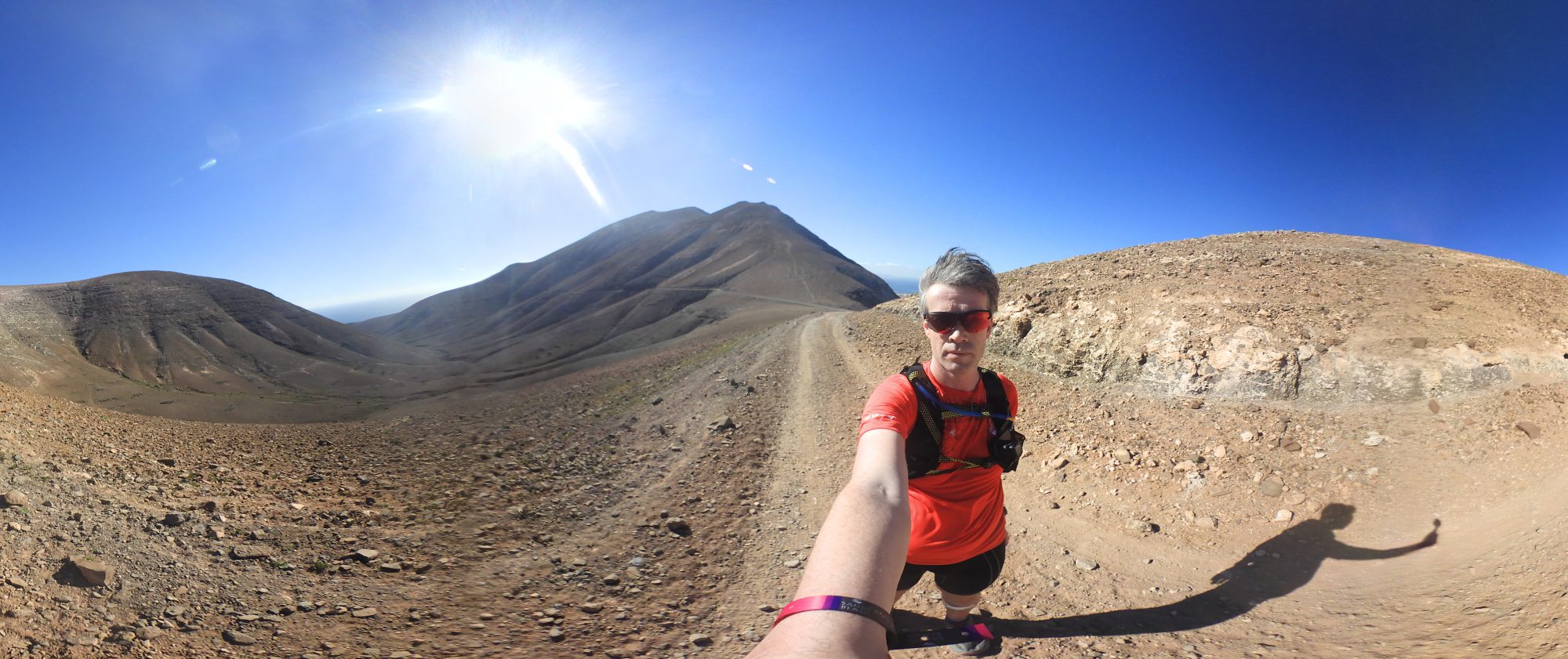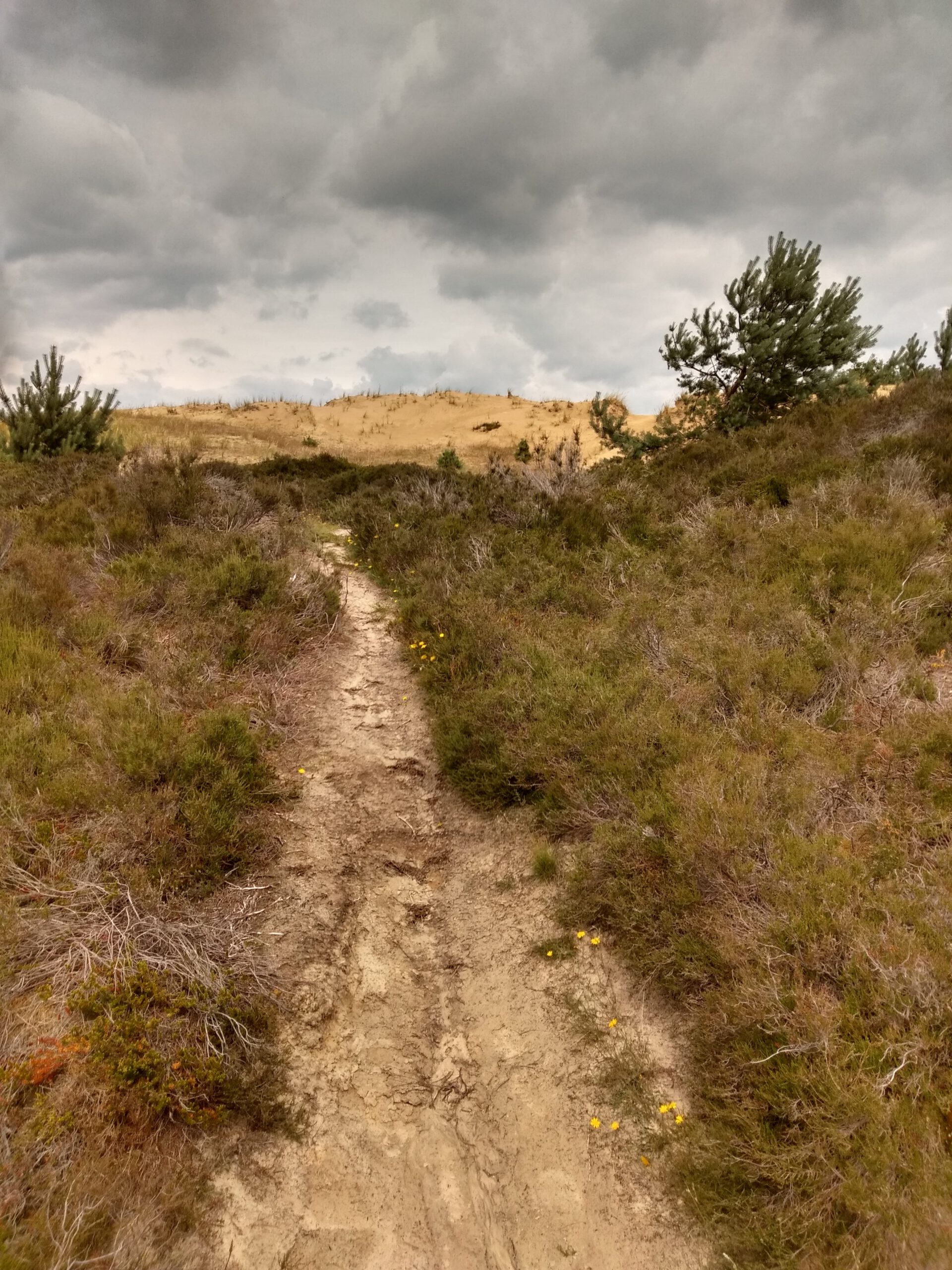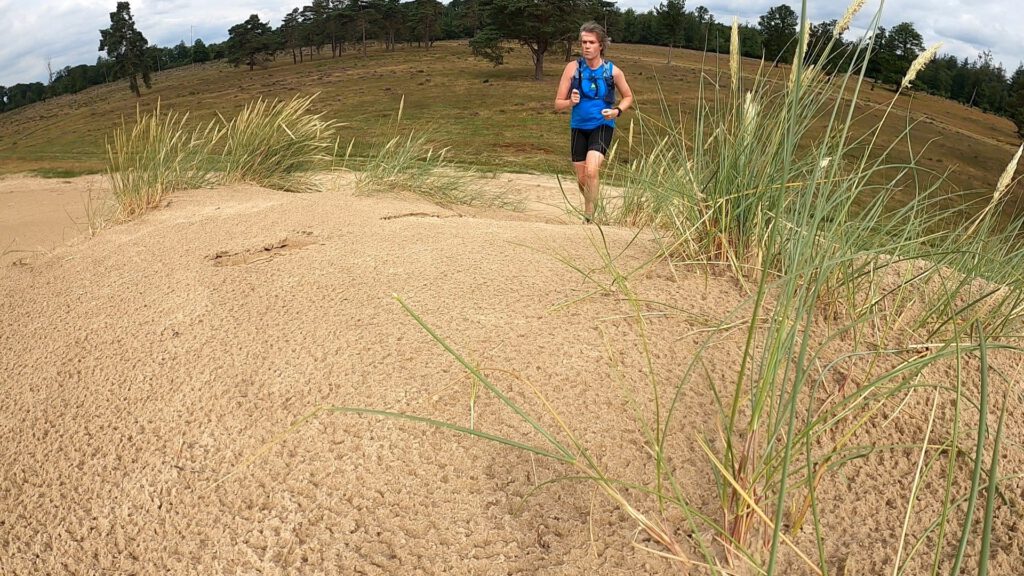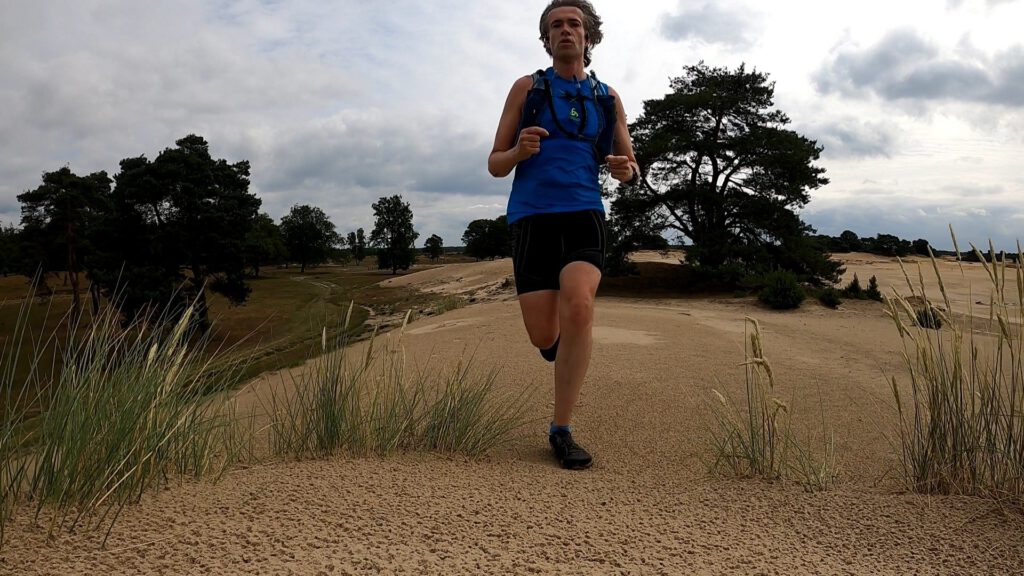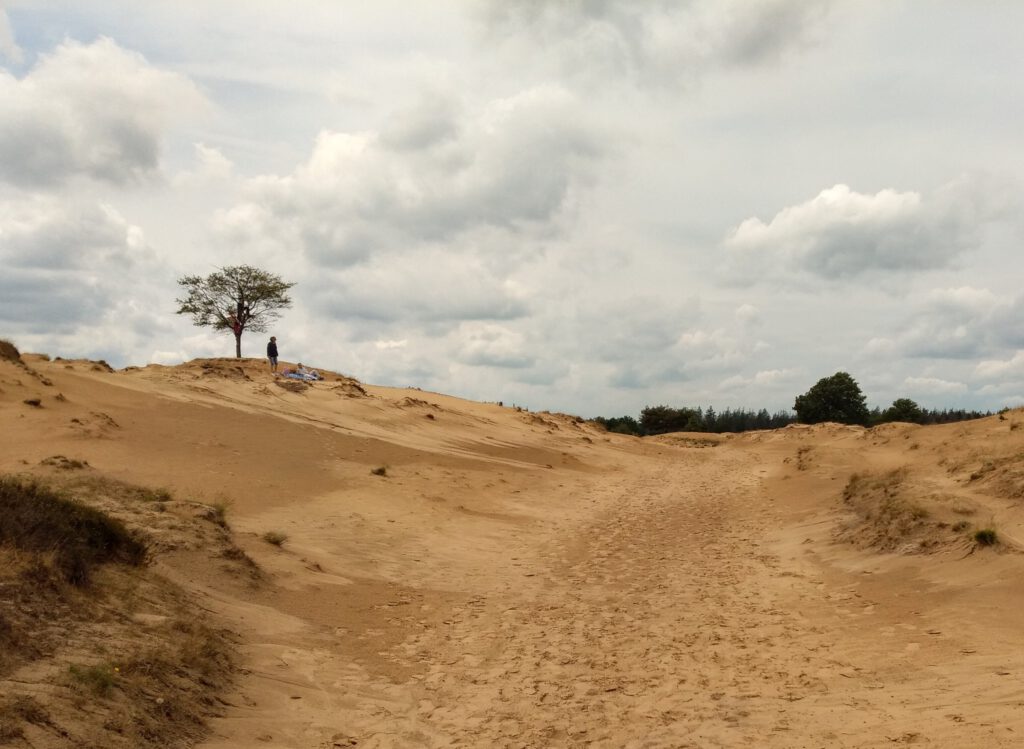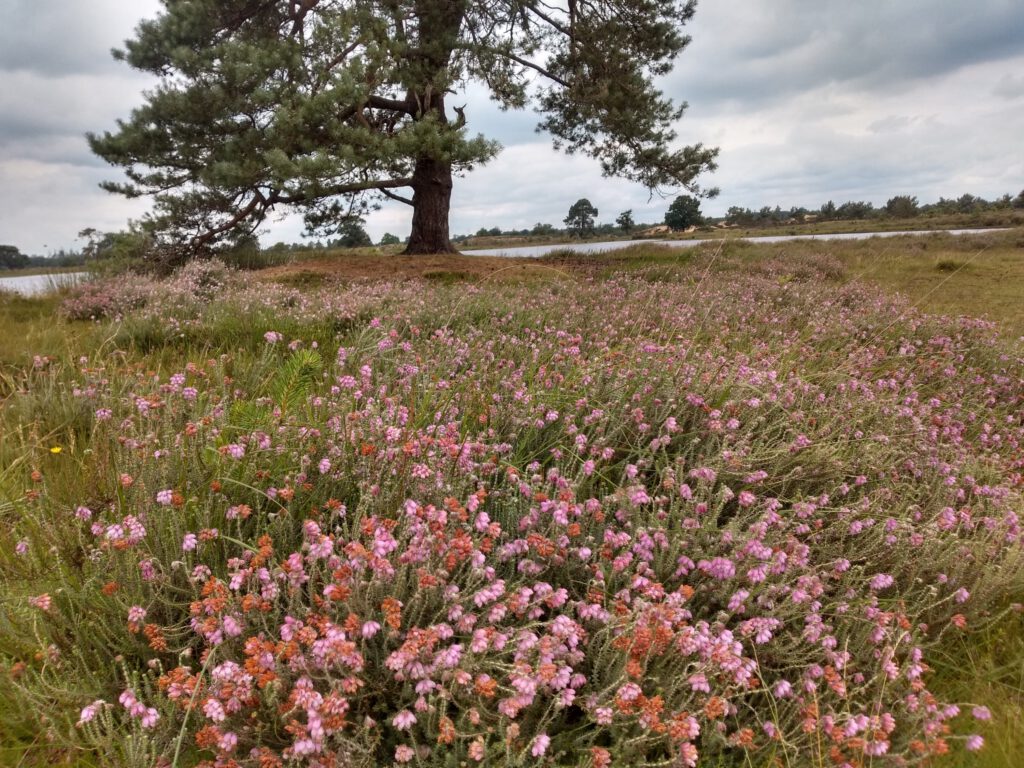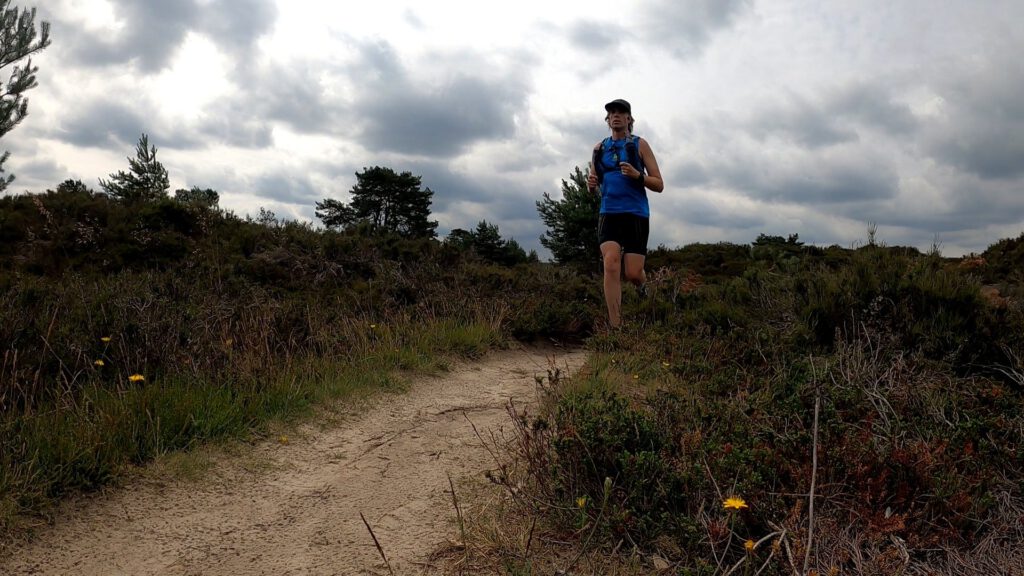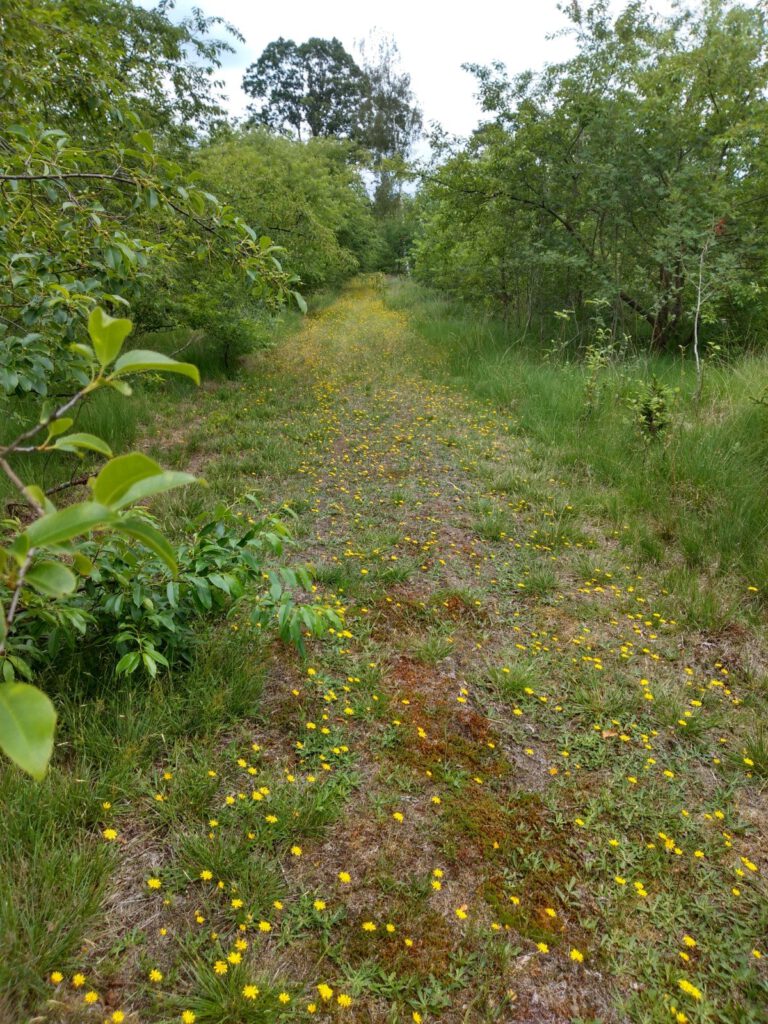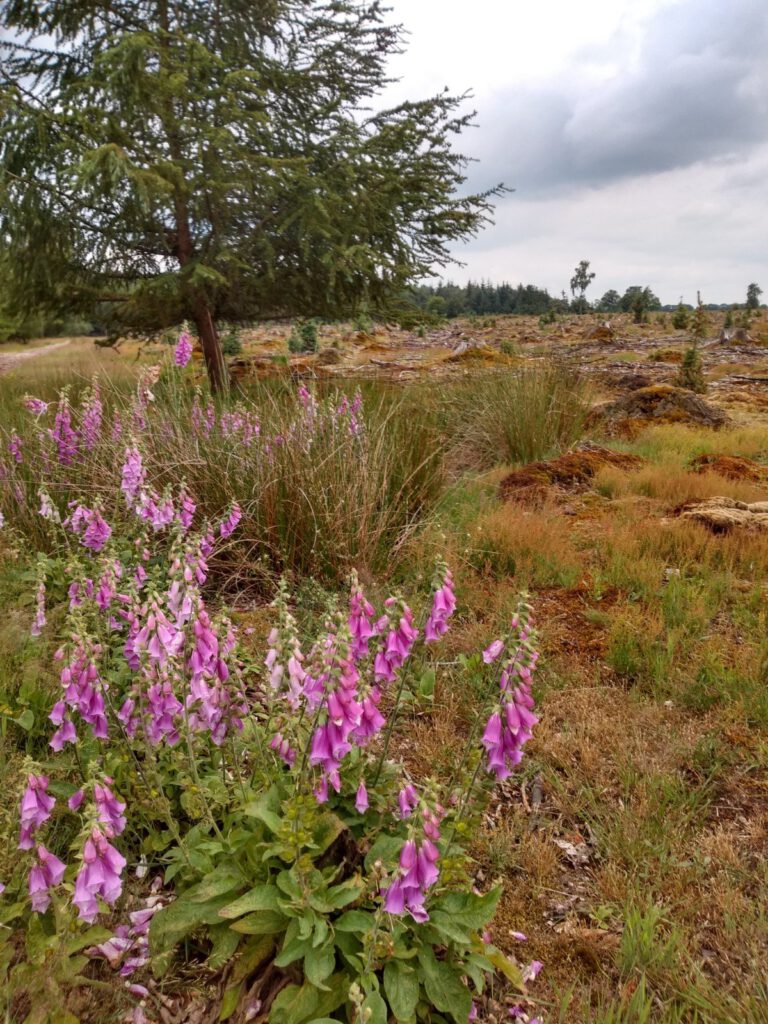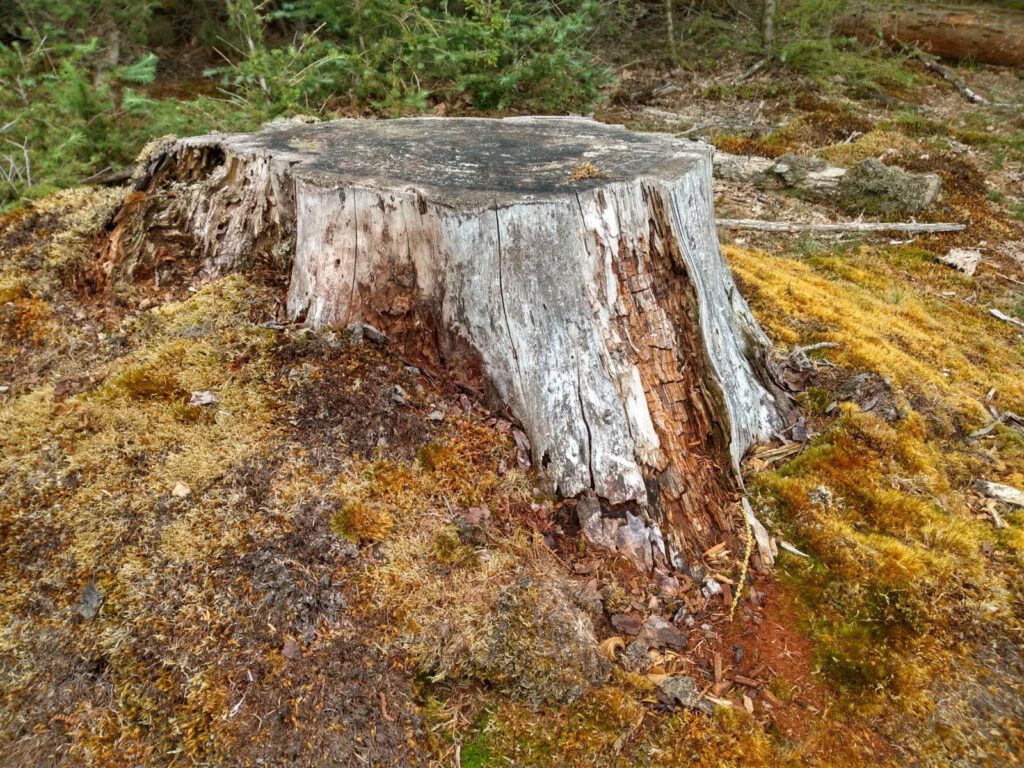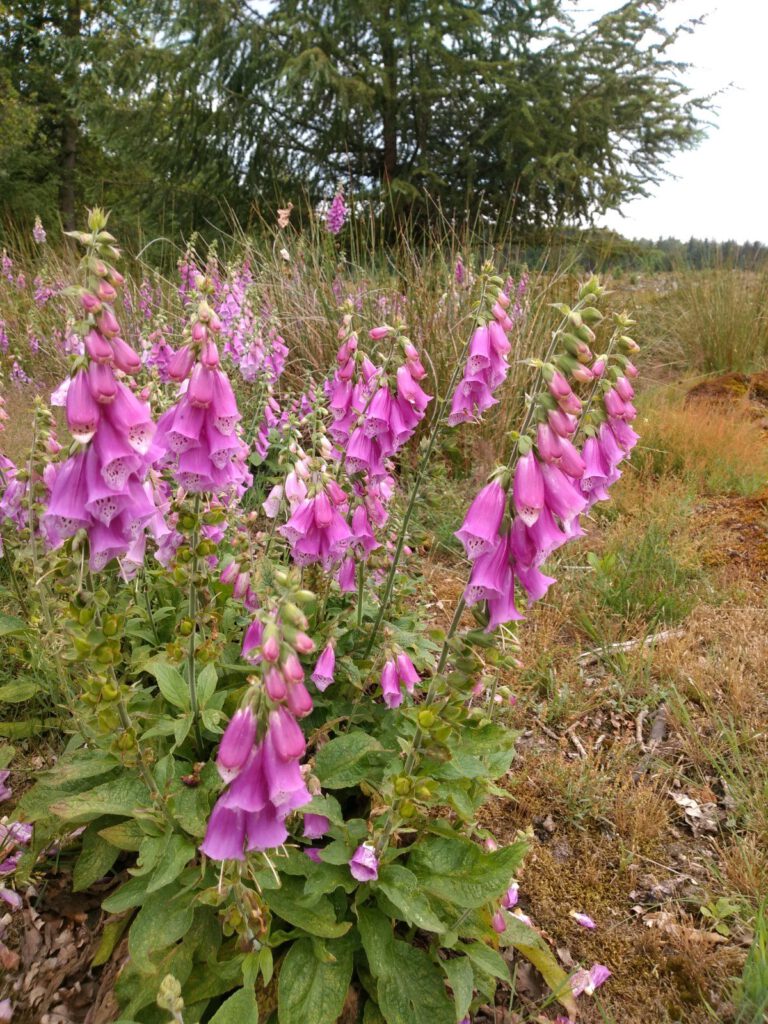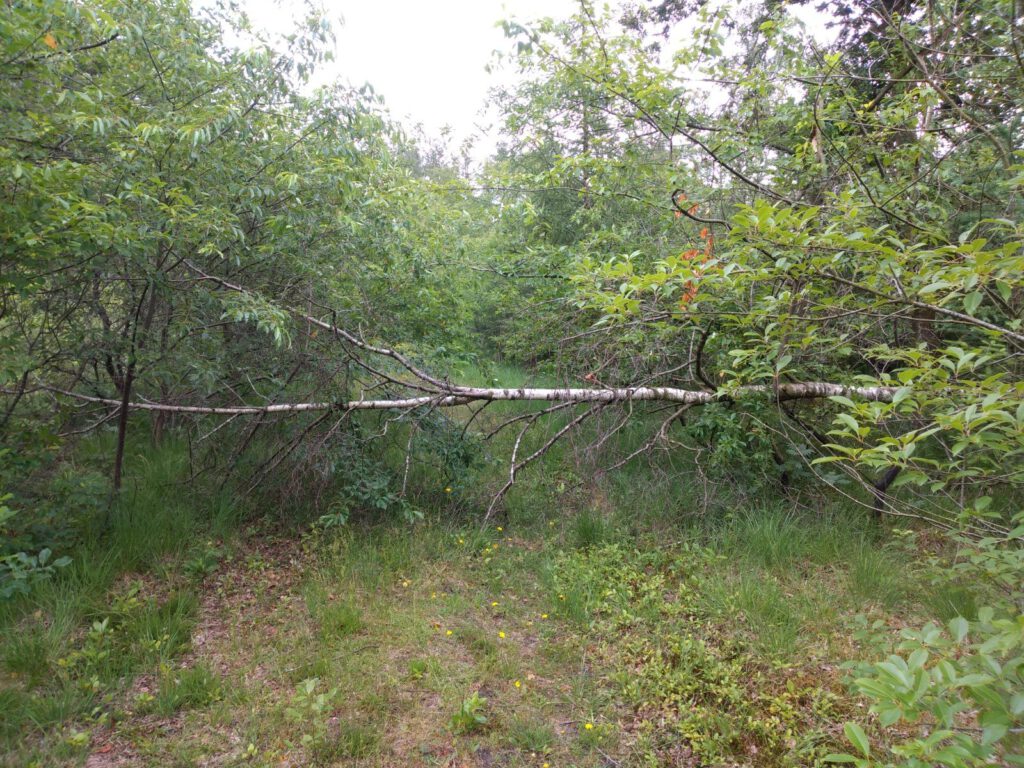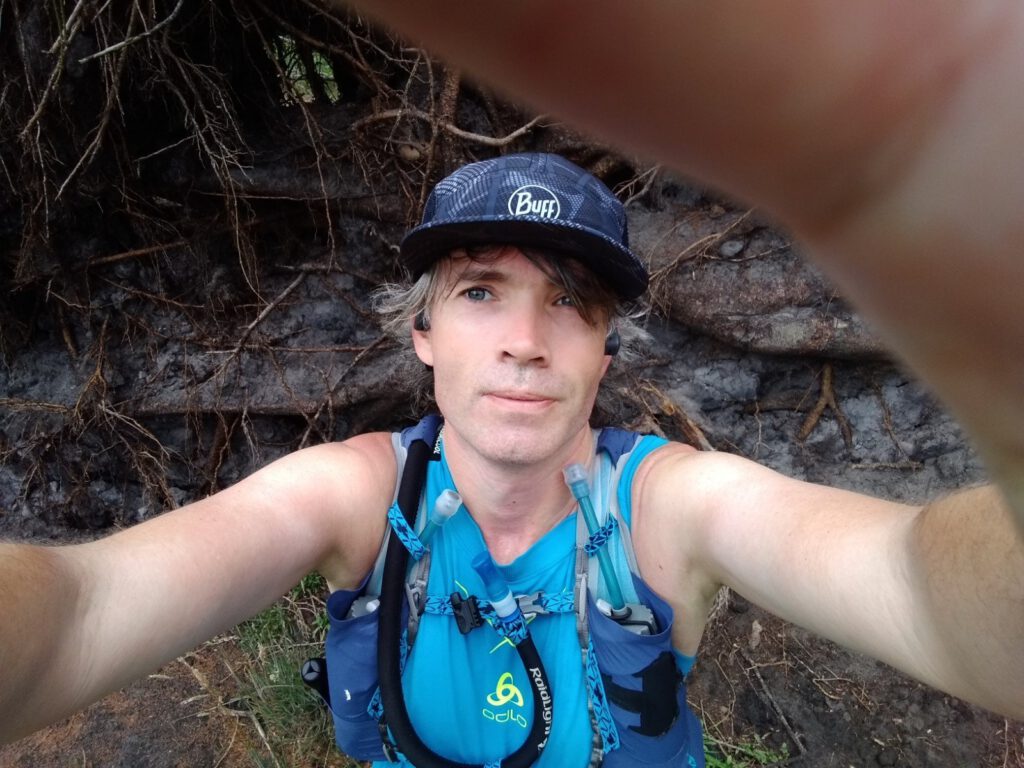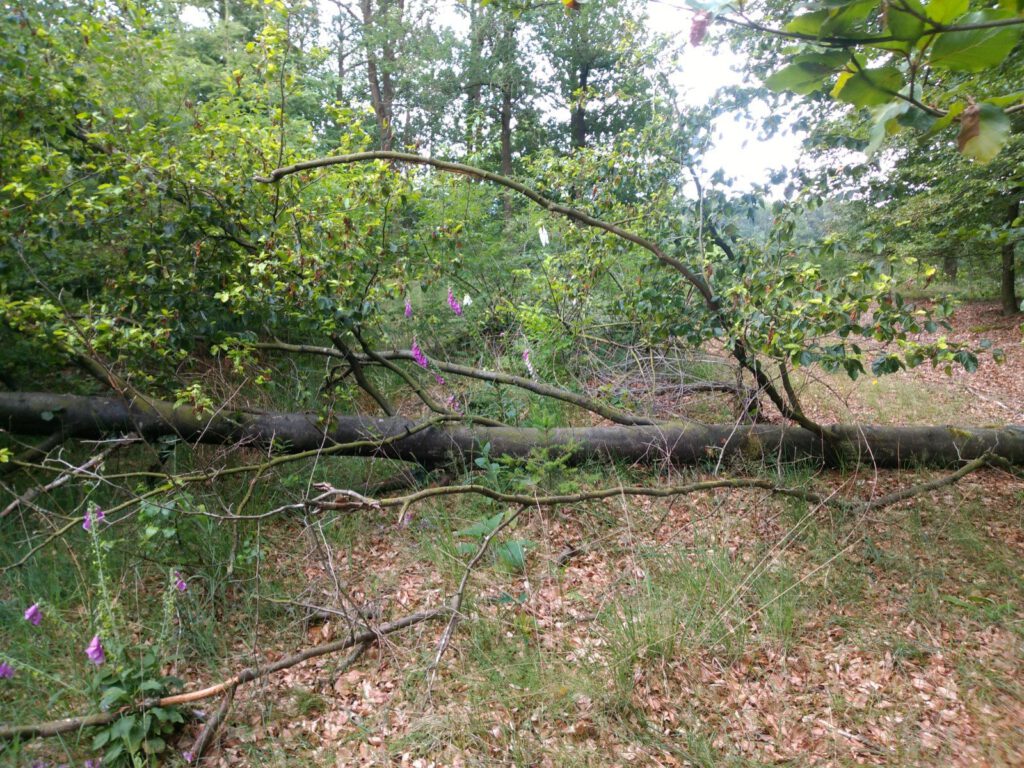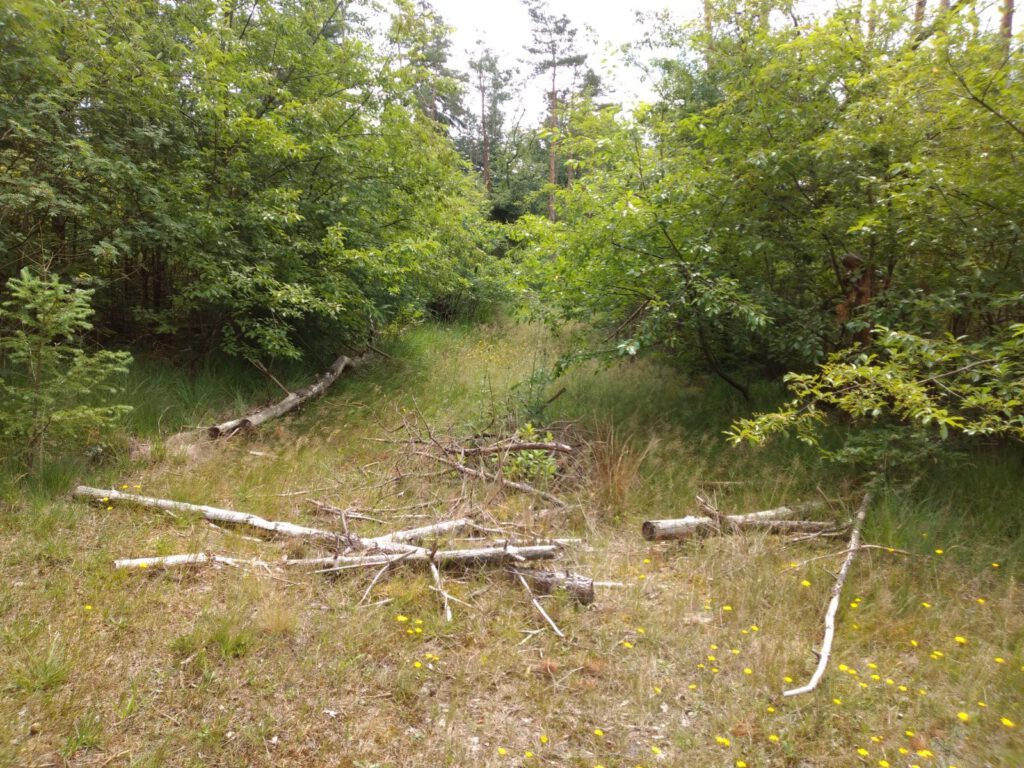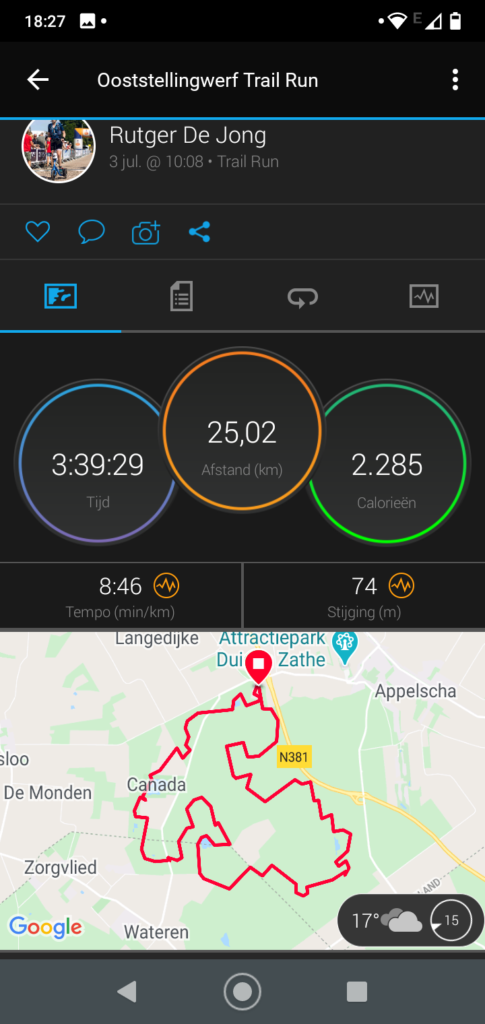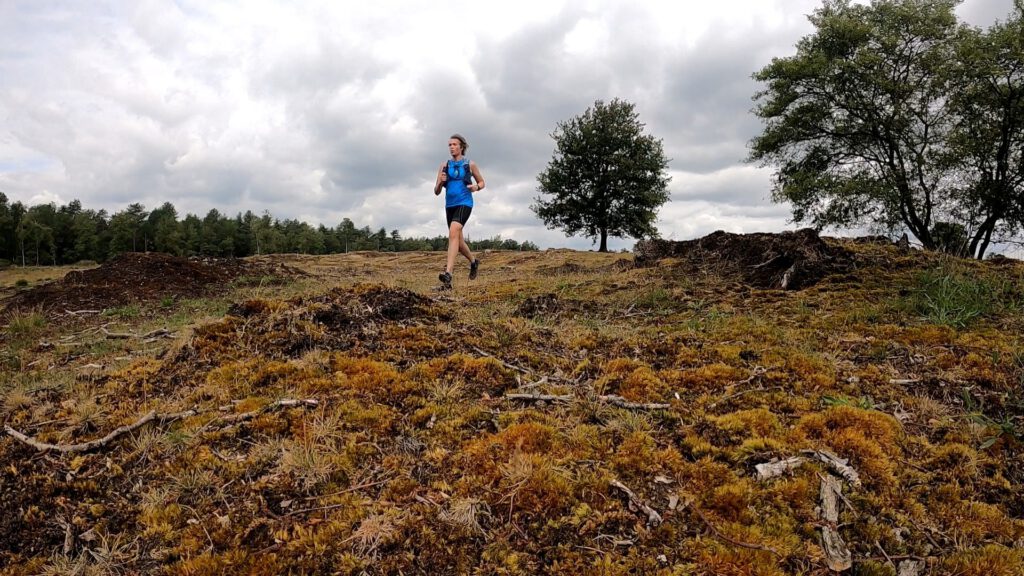
The Netherlands has many beautiful nature reserves. The northern ones are a bit more unknown to some, but just as beautiful. And from my mother-in-law's house I am there in no time, so a nice place to test out my fueling strategy again.
The Drents-Friese Wold reminds me of the long summer holidays of my youth. Not that we went there on holiday at the time, but because we lived in Tolbert (Groningen), we regularly made a trip to this area together with the dogs. The Drents-Friese Wold is not only a forest, but is especially known for the large sand dunes, which always fascinated me. It's almost like having a desert in Friesland/Drenthe.
The best-known entry point is Appelscha, which nowadays houses a visitor centre. This is also where you also have the nearby Adventure Park Duinenzathe, with its iconic caterpillar rollercoaster (dothey still have it?). From my parents' house you can be in this forest within a few minutes. As I was staying with my mother-in-law in Gorredijk, however, I had to travel a little further to Appelscha, which seemed a logical place to start, as many routes begin there. With an electric bike it can't be that far, can it?
Strategy
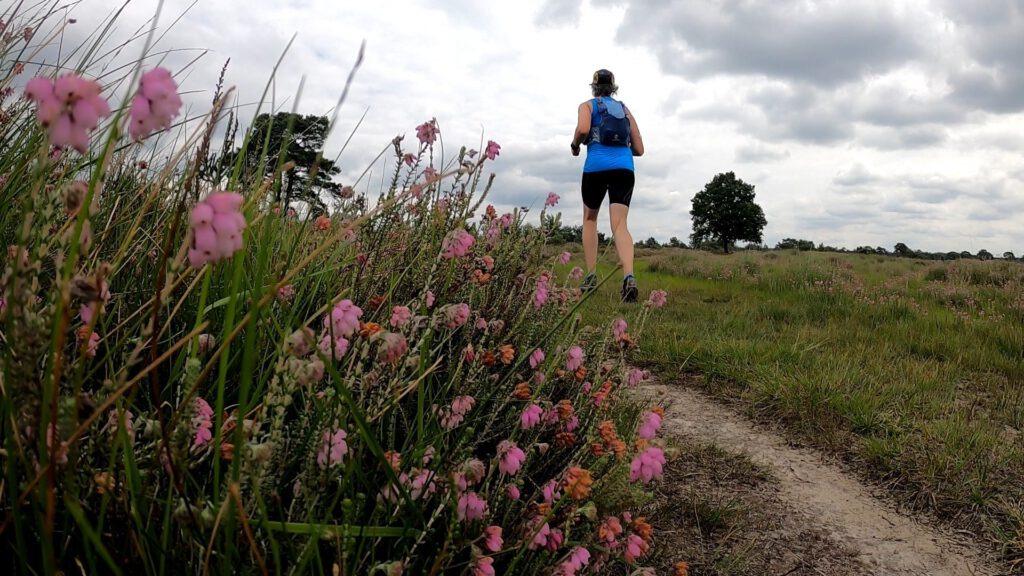
The last long run in Zuid-Limburg I did with a sober start without insulin, so I wanted to try that again today. Mind you, with diabetes a good return from the past is no guarantee for the future. Unfortunately.
The evening before, I collected my stuff neatly, pumped up the tyres of my late father-in-law's pedelec and had it recharged to 100 percent battery capacity. The goal was to leave reasonably early. Even though it wasn't so hot anymore, it wasn't advisable to start late because of the fueling: the blood sugar often drops in the morning and you don't want to be hungry while running.
Alas it went wrong almost immediately, because I was at 4.6 mmol/l when I got up. That's really too little to cycle with, electric or not. Next to a dose of Ucan, I was forced to have breakfast as well. Still, I decided not to take any short acting insulin, as I would leave almost immediately on my bike. How would this affect my strategy?
Saddle sore
To get to Appelscha I used an old electric Batavus bike. Because the battery is completely in the hollow tube of the frame, I am more at ease to leave it alone for a few hours than with other electric bikes: there's no danger of someone stealing the battery. I set the pedal assistance at maximum (position 3) against tiredness in the legs and left with my Komoot route on audio towards the visitor centre in Appelscha.
It's unbelievable what speeds you can reach with a pedelec. Without any effort I was almost continuously able to make around 28 km/hour because of the support. You reach that speed within a few seconds after the first stroke of the pedals. No such thing as slow acceleration. The only downside to the bike is that it is really heavy. At every stop I had to squeeze the brakes pretty hard. I'm starting to understand the idea of making helmets mandatory for pedelecs. But for the elderly I would also recommend mandatory power brakes...
The route to Appelscha was largely through meadows on good cycle paths. I also know the villages for the most part because it goes close to the house of my parents (Vledderveen). Unfortunately I saw many ribbons along the cycle paths: almost all of the oaks had a warning for the oak processionary caterpillar. That could mean trouble in the forest. Although I must say that I didn't see a caterpillar, I still felt it on those 25 km. And I did have sore buttocks because of the saddle... I missed my saddleless Me-Mover.
Too high
Once I arrived in Appelscha, I first checked the blood sugar. It was no wear near what I wanted it to be: 20+ mmol/l. Probably breakfast was a little too much after all, or the pedelec was too sedentary to lower the blood sugars.
When you start this high, you don't really feel well. You get thirsty, feel slow, muscles cramp. Against the odds I hoped the blood sugar would drop by itself once I started running. So I decided to take my chances. A risky strategy in itself. If the blood sugar is above a certain value, it can increase rather than decrease under exertion. This happens especially when the hyper is due to a lack of insulin instead of a surplus of food. Because I hadn't taken insulin and did have breakfast, while at the same time there was the long-acting insulin in the system, I didn't know exactly which situation would apply here.
Today's route I got from an acquaintance. About 24 km through all the diverse parts of nature the Drents-Friese Wold has to offer. Although I have to say that the first 2 km I had my doubts if it was not only about bike paths – you have them a lot in Drenthe because of the Drentenier aka grumpy looking pensionado couples that cycle 100 m apart from each other. Luckily this starter turned out to be the only paved part of the route. Probably also to avoid having to follow the same path to the visitor center twice.
Oaks
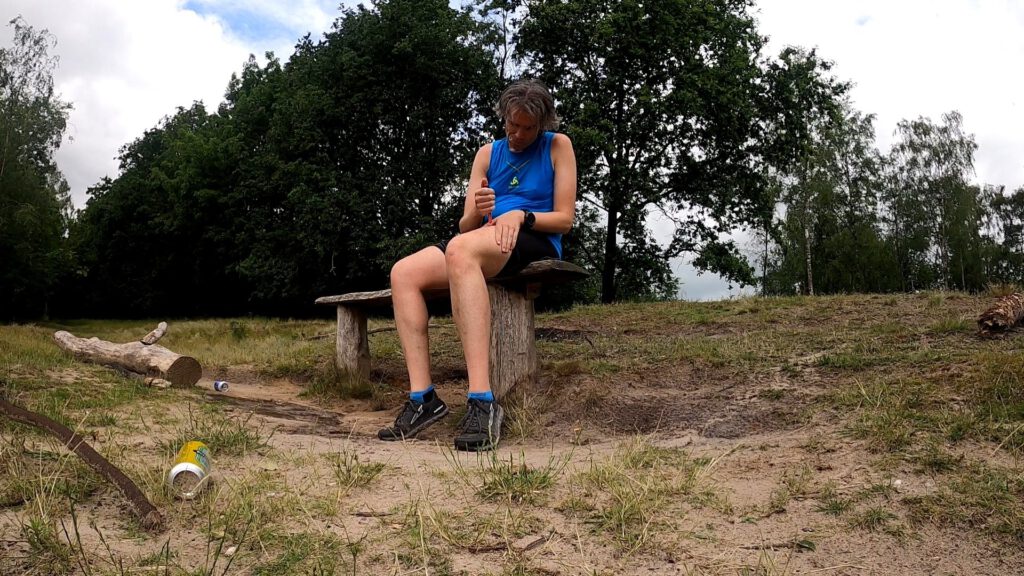
It soon became clear that my fear of oak processionals was unfounded. I did not encounter a single ribbon in the forest. Of course I could have known that, because most forests in these regions are production forests instead of parks. In practice this means that they often consist of neatly planted rows of pines. They grow nice and fast and straight. Every few years, forest management cuts down a part of them for sale. New trees are also planted, of course. So don't be surprised if you see a lot of tree stumps or felled trees.
Where the bike path stopped, I immediately encountered the fields. Of course with the classic 'vennen' – shallow but very clean puddles – which you find in these areas. So I also had to walk a tiny bit over decks, just like in Ghent. Even though the water in most meres was very low.
While running I saw that my blood sugars weren't doing very well. Every few miles I made a stop to check. They went up instead of down... After about eight kilometres I stopped at a bench near a pond to inject a little bit of insulin. Only 3 units because insulin on the run would probably be better absorbed. But would it be enough?
Sand dunes
Drenthe is the province of large nature reserves. When I was still living in Vledderveen, some parties boasted during the municipal elections that they wanted to appoint a third National Park. So next to the Dwingelderveld and the Drents-Friese Wold, both already gigantic areas. After the Veluwe, the Drents-Friese Wold is the most extensive forest area in the Netherlands. But it is much more than that: ‘In the Drents-Friese Wold you wander from sand dune to mere, from heath to swamp. Run or cycle through the Drents-Friese Wold and you'll recognise the typical Angendorf landscape: convex fields around the villages and brook valleys full of blossoming flowers.’ The route takes you along all these sights.
By the way, you don't have to take those bulging fields too seriously. However the sand dunes do give nice height differences that can be quite heavy to run over because of the sand. Always a special thing to be plodding around on these hills as a runner, while people are sunbathing on them. The sand dunes do really reminisce of the dunes at sea. Even during my lap I spotted some sunbathers who were not scared by the drops of rain I felt every now and then.
On the sand dune and the heath that followed – with in the middle a big watchtower – I met the first other hikers, among them a couple of young ladies, refreshing as I was the youngest in the forest for a long time. Because of the vastness and the small amount of tourists, it is extremely quiet in the Drents-Friese Wold at the moment. Apart from the previously mentioned hikers and sunbathers, I only saw a couple of biking pensionados, some walkers and birdwatchers. Actually, the busiest parts on the route were the MTB tracks, where a number of bikers were still practicing. Not that it was very busy there, but for a Friday in this area I was surprised to see MTB riders at all.
The peace and quiet was wonderful, especially in these hectic times. Although I have to say that people really are missing out on a beautiful area. Probably the number of visitors will pick up again in August when there are more tourists and the official moor season starts. For the heath lover: even now some species are already flowering.
Vulnerable area
While walking I kept checking regularly. After 1,5-2 hours after the start of the run my blood sugar started to drop. I think this was not only because of the extra insulin, but also because of the Ucan which works for 1,5-2,5 hours and which I had already taken before cycling. In any case, the weather seemed to be going in the right direction.
Once in the woods, I came to a path that formed a kind of carpet of yellow flowers. It was an inviting and beautiful sight, yet it seemed to me that I was not welcome here. Every few meters, and near the turn-offs, trees were strewn straight over the path. Too many to be a coincidence. Besides that, the grass was very long. So I suspect that this path is not in use anymore. Why is not clear to me, but in this area it does happen that trees are put over a path to close it off. Maybe it was because of the beautiful yellow flowers that needed protection.
The route didn't seem quite up to date on several other points. Once it turned out that the marked out path did not exist. If it had been there, it would have been a long time ago, but I suspect it was a mistake where the function ‘follow paths’ was temporarily suspended during the route making. A little detour and going back to where this path should have come from, confirmed my suspicion that the path truly did not exist.
A little later I ended up in the woods again on a stretch where you shouldn't run. Again there was a regularity to the ‘fallen' trees that blocked the whole path. That part was in principle easy to avoid. In this type of forest a lot of paths can be found in parallel, due to the production forest status, so running around a closed of path is often not a problem.
As can be expected, the breeding season also played a role. Once out of the forest I came back to the sandy plain. At several places there were signs asking visitors not to use the unmarked walking routes because of the fragile nature and breeding birds. Luckily I quickly saw on my watch that a little detour along the red and white routes would not be a problem to come back safely. So that's what I did. Please be aware, there is no large prohibition sign on this route as the large open plains cannot be easily sealed of. This area is not like a meadow with fences everywhere: the only fence is around the entire sand dune area and so they have to close all or nothing. To fellow runners I would advise to follow the directions as much as possible, so they will not close of the area on a larger scale.
Dung beetle
It was now only a short way back to the start. I had already seen many beautiful areas. The flowers, the heather, the sand and the woods. I saw large birds of prey and according to me – by the drawing and orange color – also bullfinches. For the lover of nature and tranquility this is a top area. You will mainly find elderly people there, mostly equipped with binoculars, but those do greet and usually do not bite. They are even happy when they suddenly meet you while you are standing around a horse's pâté, photographing dung beetles and heather-blue (butterflies). So this area is also a real holiday recommendation.
Fortunately, back at the visitor's centre, I saw that the blood sugars were all right again. Yippee, I was allowed to have lunch after 25 km of running and 25 km of cycling with hardly any food. Croquettes and fries as a reward before I was allowed to go back 25 km on the electric bike again. With only 5 percent battery left, I got it back to the shed with a smile of satisfaction on my face.
